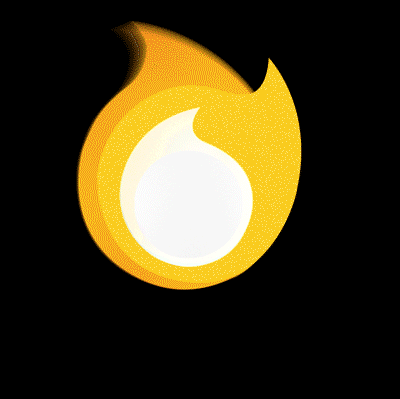We love to talk. And listen. And sometimes even argue. Ingenuity is all about exploring that space where humanity and technology meet. Discussing the good, bad, and unexpected things that happen between those two worlds is part of what we do during our annual festival in September and throughout the year. Past talks have included:
Food For Thought
Sustainable Cleveland 2019 partnered with with Growhio to host Food for Thought. Designed to ignite your passion for local foods, Food for Thought was 2-part forum.
Local Food Ignite Talks: Organized by the City of Cleveland Office of Sustainability, 10 local food champions spoke about their ideas and personal or professional passions, accompanied by 20 slides. Each slide was displayed for 15 seconds, and slides automatically advanced. Feed your mind with 10 presenters in under an hour!
- Mansfield Frazier, Chateau Hough
- Sudhir Raghupathy, Eco Tuesday
- Ifeoma Ezepue, Cleveland Crops
- Carlton Jackson, Tunnel Vision Hoops
- Brittany Barski, Cuyahoga Metropolitan Housing Authority Green Team
- Paula Hershman, Storehouse Tea
- Christa Ebert, Neighborhood Progress Inc and co-founder of the 1st annual Citywide Potluck
- Gwen Forte, Growhio
- Jenny Kelly, Kelly Green Web
- Diane Morgan, Maggie’s Farm
- Kristen Baumlier-Faber, Food Fonts
Panel of Locavore Chefs: We learned about the motivation of Cleveland chefs to source food locally and had an opportunity to ask questions. Moderated by Kari Moore (farmshareohio.com) and Noelle Celeste (www.ediblecommunities.com/cleveland)
- Karen Small, Flying Fig
- Ben Bebenroth, Spice
- Douglas Katz, Fire
- Julie Hutchison, Root Cafe
For more information about Sustainable Cleveland 2019, visit www.SustainableCleveland.org
Feeding Flight
This series of talks and performances explored how people and technology have come together to put us in the sky, space, other planets, and beyond. From the Wright Brothers to the Jet Age to the Curiosity mission on Mars we looked at the technology that got us there and its impact on humanity.
The Wright Brothers and the Invention of the Airplane
Tom Benson
Mr. Wilbur Wright of Dayton, Ohio, presents results from experiments concerning the development of a practical, piloted, flying machine. The experiments were conducted between 1899 and 1905, at Kitty Hawk, North Carolina and Dayton, Ohio with his brother, Orville Wright.
Wilbur Wright will be presented by Tom Benson who is an aeronautical engineer in the Turbomachinery and Propulsion Systems Division at the NASA Glenn Research Center. Benson currently works on several educational outreach activities at the center, including the development of the agency’s Beginner’s Guide to Aeronautics and Re-Living the Wright Way web sites for the Educational Programs Office (EPO).
Michelle Epps
International Women’s Air and Space Museum
Katharine Wright, affectionately known as “Sterchens” (short for the Germen word Schwesterchen meaning little sister) to her famous brothers Orville and Wilbur, was the third member of the Wright Brother’s team seldom mentioned in history books. Though Katharine’s role in the first flight at Kitty Hawk is subject to rumor and speculation, we do know she was dedicated to the success of her brothers and their flying machine. Katharine also represents a sort of silent enthusiasm from women in society but we will also be talking about women alive during Katharine’s time that threw convention to the wind and embraced this new technology and the freedom it offered. Michelle Epps has been the Education Director at the International Women’s Air & Space Museum.
Aeronautics at the Dawn of the Space Age
Tom Benson
From the late 1910’s to the late 1960’s, we have witnessed an evolution in flying machines from the wood, wire, and cloth of the Wright Brothers, to the rocket-powered, bullet-shaped supersonic aircraft of Chuck Yeager, and on to the gas turbine-powered airliners which daily carry hundreds of paying passengers across the oceans. Several technology breakthroughs in aeronautics have made all of this possible. This talk examined those breakthroughs, the science and engineering behind the technology, and the individuals involved in the discovery.
The talk was presented by Tom Benson, an aeronautical engineer in the Research Directorate at the NASA Glenn Research Center. Benson has been at NASA Glenn for 35 years, working in high speed computational fluid dynamics for propulsion systems and in many educational outreach activities at the center.
Apollo Opera
This song cycle with lyrics, created from Apollo 11 transcripts, explores arguably the greatest journey ever taken by man. Using text directly from the mission transcripts, this piece shows the human side of space travel. Written and performed by Rob McGinness, a student at the Oberlin Conservatory of Music, accompanied on the piano by Meeyoun Park.
The Space Shuttle
Thirty Years of Flight
Matthew Melis
NASA’s Space Shuttle, heralded as the world’s most complicated machine, completed 133 successful missions over its 30 year history. NASA’s Matt Melis provides a brief history and a detailed look into the inner workings and operation of the Space Shuttle and the hundreds of people who made them fly. Highlights from some the of the Shuttle missions will be shown.
Melis has worked at the NASA Glenn Research Center for 29 years as an aerospace engineer on NASA’s aeronautics, Space Station, and Space Shuttle Programs. He graduated from Michigan State University with a bachelors in civil engineering and a masters in applied mechanics.
People and Robots Together in Space Flight
Brian Palaszewski
From the Moon landing to the Mars Rover, people and robots have both been vital to exploring the outer reaches. Brian Palaszewski covers the past accomplishments and the hopeful future of both people and robots in our exploration of space. He also gives the latest scoop on the Mars Science Laboratory and the Curiosity Rover, currently conducting extensive observations on the surface of Mars.
Palaszewski has worked at the NASA Glenn Research Center at Lewis Field since 1989 and is currently directing research on high performance propellants and atmospheric entry and in-situ resource utilization (ISRU). Recently, he led work related to human Mars entry, descent, and landing (EDL) where supersonic retro-propulsion (rocket deceleration) is planned for the final descent to the planet’s surface. He is also investigating outer planet atmospheres and the challenges and benefits of mining them for future ambitious space missions. For six years, he led many studies of advanced space systems for orbital and interplanetary travel at the Jet Propulsion Laboratory, Pasadena.
Damage Assessment and the Shuttle Program
Dr. Kelly Carney
For the last four years of the Space Shuttle Program, Dr. Kelly Carney was a member of the Damage Assessment Team at Mission Control in Houston. After the Columbia accident, the Damage Assessment Team carefully examined hundreds of images evaluating damages to tiles, blankets and the leading edge of the Shuttle Orbiter and decided whether or not to perform spacewalk repairs. Dr. Carney presents a brief history of the most expansive damages, one of which required an improvised repair.
Carney started at NASA Glenn Research Center in 1982, working on the Atlas/Centaur, Shuttle/Centaur, and Titan/Centaur rockets and the Space Station Solar Arrays. After completing his PhD at Case, he began research into impact and the safety of jet engines. When the Columbia accident occurred, he assisted in the accident investigation and effort to return the Space Shuttle to flight. After the Space Shuttle began flying again, Dr. Carney was then made responsible for all structural analysis on the Space Shuttle Orbiter.
The Mercury Project
Peter Naegele, Timothy Smith, Darin Sullivan, Donn Nottage
This musical tribute to the early days of NASA, The Mercury Project spans the realms of ambient, industrial, EBM and synth-pop. The result is a mind bending, thought provoking, and awe inspiring cyber-gothic retrospective of the past 50 years of aeronautics and space research.
The name “Mercury Project” was derived from the name “Project Mercury”, NASA’s adopted name for the first national manned space flight project. “Project Mercury” began in 1958 and ran for over 4 years, resulting in 6 manned flights and a total of 25 missions.
Cleveland Salon
Organized by Andrew Samtoy and Jonathan Rodriguez-Lucas
A weekend of ever evolving discussions about the big (and not so big) ideas of our times. Stop by the Salon tent where discussion leaders who are well versed on various subjects, talk with a group about things that matter to our people and our city. The goal? Everyone walking out with next-steps for improving their lives and the lives of others.
The Art and Science of Chemistry
Drs. Jerry Mundell and Anne O’Connor
Sunday, September 16 – Noon
Mundell and O’Connor both entertain and engage the audience in the principles of chemical and physical properties, minuteness of atoms, properties of gases, and sublimation of solids through entertaining demonstrations that include colorful chemical reactions, volumetric flask bubble factories, collapsing cans under atmospheric pressure, liquid nitrogen, dry ice, and soda pop geysers. The demonstrations end with delicious liquid nitrogen strawberry ice cream served to an appreciative audience. Hands-on activities are available for the younger children that include making bouncing balls, colorful fish and butterflies, glitter slime, decorative stained glass glue, and writing invisible messages. The activities introduce children to polymerization reactions, acid-base indicators, and paper chromatography.




